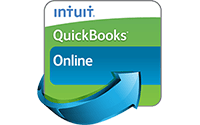2022 continues to be a challenge for many business taxpayers. The pandemic crisis brought massive unemployment, business closures, and an enormous amount of uncertainty that has continued into 2022. Inflation and rising interest rates have made the cost of debt, goods, and services more expensive and cooled consumer spending. The stock market has declined sharply, and the prospect of a recession is on the rise.
With potential tax changes looming due to the outcomes of the November U.S. congressional election, there remains uncertainty in how this will impact business taxpayers. As any potential legislation continues to evolve, we will let you know. In the meantime, as the year draws to a close, you should be considering the following:
Full Expensing of Assets – Depreciation Can Dramatically Affect Taxable Income
Section 179 Expensing
- Businesses should consider making expenditures that qualify for the Section 179 business property expensing option. Section 179 expensing is generally available for most depreciable personal property, off-the-shelf computer software, and some Qualified Improvement Property (QIP). The generous dollar ceilings that apply this year mean that many small and medium sized business expenditures like machinery and equipment that are purchased and placed in service will be currently deductible. Section 179 expensing is not prorated for the time that the asset is in service during the year. This opens up significant year-end planning opportunities.
- For tax years beginning in 2021, the expensing limit is increased to $1,080,000 and the investment ceiling limit is increased to $2,700,000.
- Section 179 expensing is now allowed for personal property used in connection with furnishing lodging (i.e., hotel, motel, or rental condo or house). Examples of eligible personal property include furniture, beds, kitchen appliances and other equipment used in the living quarters of a lodging facility.
- Section 179 expensing can be claimed for qualifying real property expenditures, up to the maximum annual deduction of $1,080,000. There is no separate limit for qualifying real property expenditures, so Section 179 expenses claimed for real property reduce the maximum annual allowance dollar for dollar.
- Qualifying real property means any improvement to an interior portion of a nonresidential building that is placed in service after the date the building is first placed in service, except for expenditures attributable to the enlargement of the building, any elevator or escalator, or the building’s internal structural framework.
- The definition of qualifying real property includes roofs, heating, ventilation, and air-conditioning property, fire protection, security and alarm systems for nonresidential real property.
Bonus Depreciation
- Businesses also should consider making expenditures that qualify for 100% bonus depreciation if bought and placed in service this year. Again for 2022, 100% bonus depreciation is allowed on new and used property. The 100% bonus depreciation deduction is permitted without any proration based on the length of time that an asset is in service during the tax year. As a result, the 100% bonus depreciation write off is available even if qualifying assets are in service on the last day of the year. 100% bonus depreciation is currently scheduled to be phased down for years after 2022 and eliminated by 2027 (80% for 2023, 60% for 2024, 40% for 2025, 20% for 2026 and 0% for 2027).
De Minimis Safe Harbor
- An exception to the capitalization rules allows eligible taxpayers to take a current deduction for items that cost less than a specified amount or that have an economic useful life of 12 months or less. In general, an individual cost that does not exceed $2,500 can be deducted as incurred as an operating expense. To qualify for this election, a taxpayer must have an accounting procedures policy in place at the beginning of the tax year that treats the cost of items as an expense for nontax purposes.
- For those who do not have a policy in place, Berndt CPA LLC can prepare a policy for the business, and then make the election on your behalf during the normal preparation of the business tax return.
- The Policy is valid once signed for all years going forward. If one was prepared for you in a prior year, another policy is not required.
While the following are some of the actions you should consider, the focus should not be entirely on tax savings. These strategies should be adopted only if they make sense in the context of your total financial picture.
Accelerating Income into 2022
Depending on your projected income, it may make sense to accelerate income into the 2022 tax year. Some options for accelerating income include:
- For accrual basis taxpayers – consider completing projects/services and billing for those projects in December 2022, if possible.
- For cash basis taxpayers – consider sending out your customer invoices sooner in order to collect the revenue before December 2022, if possible.
Deferring Income into 2023
There are also scenarios (for example, if you think that your income will decrease substantially next year) in which it might make sense to defer income into the 2023 tax year. Some options for deferring income include:
- For accrual basis taxpayers – consider delaying the completion of projects/services and billing for those projects in January 2023, if possible.
- For cash basis taxpayers – consider delaying the sending of your customer invoices towards the end of December 2022, if possible.
- If you are a debtor, consider deferring a debt-cancellation event until 2023, if possible.
Accelerating Deductions into 2022
If you expect your income to decrease next year, we should accelerate what deductions we can into the current year. Some options for accelerating deductions include:
- For cash basis taxpayers – consider paying Q1 2023 scheduled employee bonuses in 2022.
- For cash basis taxpayers – consider making an employee retirement plan contribution for 2022.
- For cash basis taxpayers – consider charging recurring expenses in 2022 that you normally pay early next year on credit cards. You can claim a 2022 deduction even though the credit card bill won’t actually be paid until 2023.
- Consider purchasing and placing in service machinery and equipment in 2022. Remember the Section 179 deduction, as mentioned above, is now increased to $1,080,000 for 2022.
- Consider disposing of a passive activity in 2022 if doing so will allow you to deduct suspended passive activity losses.
Recent Legislation and Other Considerations
- New Energy Efficient Home Credit – this credit is available to eligible contractors for qualified new energy efficient homes acquired by a homeowner before Jan. 1, 2033. A home must satisfy specified energy saving requirements to qualify for the credit. The credit was either $1,000 or $2,000, depending on which energy efficiency requirements the home satisfied, but can now be $500, $1,000, $2,500, or $5,000, depending on which energy efficiency requirements the home satisfies and whether the construction of the home meets prevailing wage requirements.
- New Credit for Qualified Commercial Clean Vehicles. There is a new qualified commercial clean vehicle credit for qualified vehicles acquired and placed in service after December 31, 2022. The credit per vehicle is the lesser of: (1) 15% of the vehicle’s basis (30% for vehicles not powered by a gasoline or diesel engine) or (2) the “incremental cost” of the vehicle over the cost of a comparable vehicle powered solely by a gasoline or diesel engine. The maximum credit per vehicle is $7,500 for vehicles with gross vehicle weight ratings of less than 14,000 pounds, or $40,000 for heavier vehicles.
- Qualified Small Business Payroll Tax Credit for Increasing Research Activities – A “qualified small business” (QSB) with qualifying research expenses could elect to claim up to $250,000 of its credit for increasing research activities as a payroll tax credit against the employer’s share of Social Security tax. For tax years beginning after December 31, 2022, QSBs may apply an additional $250,000 in qualifying research expenses as a payroll tax credit against the employer share of Medicare. The credit cannot exceed the tax imposed for any calendar quarter, with unused amounts of the credit carried forward.
- Employee Retention Credit (ERC) – Previous legislation from 2020 provided a refundable employment tax credit for eligible employers paying qualified wages and health plan expenses. This tax credit was available for any employer whose business operations were fully or partially suspended due to orders from a governmental authority or an employer with a significant decline in gross receipts. A 2021 law has retroactively terminated the ERC before it was scheduled to end. The ERC now only applies through September 30, 2021 (rather than through December 31, 2021) — unless the employer is a “recovery startup business.” Eligible employers that have not yet claimed (or incorrectly claimed) any ERC for qualified wages paid between March 13, 2020, through and including September 30, 2021, may still obtain the ERC by amending their quarterly employment tax returns (i.e., Forms 941-X, “Adjusted Employer’s Quarterly Federal Tax Return or Claim for Refund). If you haven’t assessed this opportunity or we currently are not working on this for you, please reach out and let us know so we can determine if you qualify.
- Tax-Free COVID-19 disaster relief payments to employees. COVID-19 disaster relief payments to your employees for necessary personal, family, living or funeral expenses incurred as a result of COVID-19 are tax–free to your employees and deductible to you as a business expense (i.e., not considered wages). The exclusion from income does not apply to payments in the nature of income replacement, such as payments for lost wages, unemployment compensation, or payments in the nature of business income replacement. Although a formal plan is not required by the business, we recommend you develop one that includes the details (e.g., starting and ending dates of the program, a listing of expenses you will pay or reimburse, the maximum payment per employee, etc.) and have the employee sign a statement affirming the payments qualify. President Biden extended the National Emergency, which currently allows employers to make these payments through February 2023.
As 2022 comes to a close, this is an optimal time to engage in short and long-term planning to help you meet your financial goals. With potential tax changes looming and the fact that uncertainty still exists in the future, advance preparation can help reduce your tax bill and address challenges and opportunities facing your business.
We encourage you to contact us at your earliest convenience to discuss how the current tax environment may affect your unique situation and develop a strategy that makes sense for your business. Contact Berndt CPA
Sincerely,
Berndt CPA LLC







